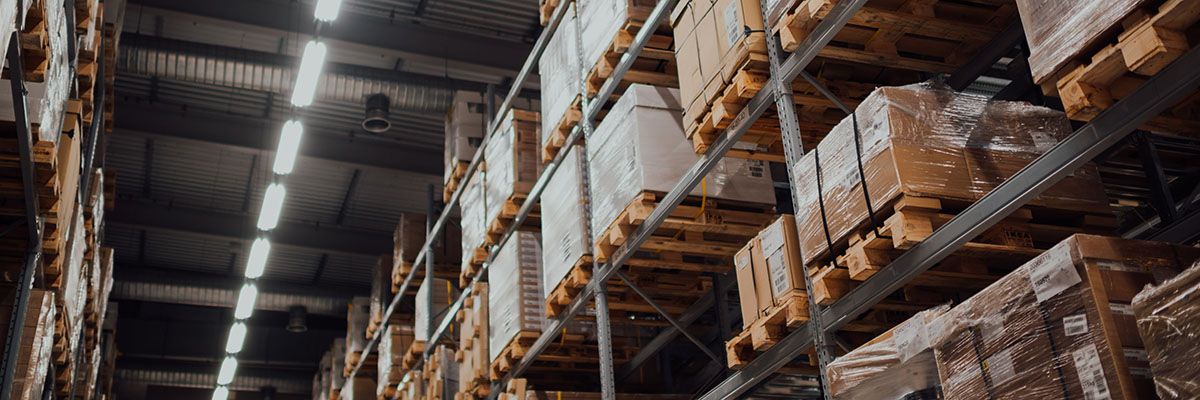
How can you reduce energy costs in the warehouse sector?
From the perspective of HVAC and energy cost reduction, the warehouse sector presents a unique challenge.
For one thing, they’re often sizeable facilities that place heightened demands on an HVAC system. For another, optimal HVAC performance must satisfy at least two distinct ‘audiences’ – staff and goods – which may not have identical heating and ventilation requirements. For example, some warehouses may need to maintain low temperatures for products requiring refrigeration; for others, managing humidity may be the key issue. Some warehouses may need to address both requirements in a single location.
Warehouses are also commercially important. Over the past five years, there’s been a surge in demand for these sorts of facilities and many of us don’t have to look too far to see new builds dotting the landscape. That’s primarily the result of the boom in e-commerce (accelerated by the pandemic) and the resulting behavioral shifts of consumers toward purchasing online. It’s safe to say that large warehouses are increasing in number. So, the discussion around how to optimize their HVAC performance is timely.
Given this reality, let’s look in a little more detail at some of the leading, specific HVAC challenges that warehouses present.
1 - Outside air
A key feature of most warehouses is loading doors, which are often in constant use. For HVAC, this presents a real challenge (imagine trying to maintain the temperature in your house with the front door endlessly open! How do you keep the heat in and the cold out?) Loading doors (and windows, particularly large ones, which are also often present in warehouses) create what is known as “leak points,” and compared to smaller facilities, warehouses have many of these. Tracking and responding to their use is challenging.
2- Air flow
As we noted earlier, warehouses are generally large, open spaces. Among other things, that means air tends to settle in place and become stagnant. Stagnant air has a range of adverse effects, most notably on employee health, but it also makes temperature control difficult. Given the physical scale of many warehouses, the temperature control problem can’t be blasted away by the simple remedy of a “more powerful” HVAC system. Furthermore, large warehouse spaces tend to have high ceilings making the right degree of heating or cooling in a particular room (or zone within the warehouse) difficult to achieve.
3- Equipment
Warehouses often contain mechanical equipment (for instance, refrigeration units) that generate heat. This has to be considered when designing and subsequently managing the HVAC system. Does heat from these sources need to be removed, or can it be reused? The answer will significantly impact both temperature control within the warehouse and the facility’s carbon footprint. Potentially, “waste heat” from one area can be used to deliver “free heat” to another.
4- Energy costs/bills
As with any facility, employee comfort matters which frequently means heating (or air conditioning, depending on climate and location) is running more or less non-stop. In a facility the size of a warehouse, that means incurring high costs because it takes a lot of energy to do the job. This is why energy is one of the major costs of operating a facility. As a result, controlling and monitoring energy use tend to be vital to the warehouse’s overall profitability.
5- Zoning
Compared to other facilities, the majority of space in a warehouse is used for storage, and the space occupied by people is far more limited. The latter areas command the attention of temperature control measures while, often, temperature control for storage spaces is unnecessary and sometimes even wasteful. As a result, zoning – creating sections of the warehouse occupied by staff - and focusing heating and cooling efforts on those more limited spaces tends to be the best approach. However, some warehouses have continuous human traffic throughout the facility and where this is the case, HVAC faces a different challenge. Each scenario will require different approaches to optimizing heating and cooling if efficiency is to be achieved.
6- Stratification
As we all know, hot air rises and cold air sinks. In a warehouse, this impact is exaggerated compared to many facilities due to size. Thus it presents a prevalent challenge for HVAC known as “air stratification.” (The rule of thumb here is that the bigger a facility, the poorer the airflow is likely to be, and warehouses are big!) Stratification is a serious challenge for HVAC systems because the hot air generated for heating rises to the top, which creates a potential for wasted energy. As a result, “destratification” countermeasures to push hot air downward are often required (for instance, diffusers or fans) as part of the energy reduction process.
The NexRev advantage
To summarize, warehouses are particularly challenging facilities from the perspective of managing and optimizing HVAC performance. Still, the challenge must be met; Successfully addressing what can dramatically impact the facilities operating costs. Optimizing energy consumption with a tailored approach delivers better performance, and that’s where NexRev’s solutions come in. By enabling effective, real-time energy management , they can enable warehouses to operate far more efficiently.
NexRev’s solutions enable the warehouse operator to update legacy systems and optimize performance with dynamic management. This will:
- Reduce costs and reduce energy consumption for warehouse facilities.
- Deliver real-time energy management for large facilities
- Enable access to KPIs and performance insights for reporting and optimization
- Provide consistent conditions to meet operational requirements
- Reduce costs and boost sustainability credentials in the supply chain
At NexRev, we’ve been unlocking the power of facility and energy management data with over half a million connected devices across North America. Our team of experts is focused on helping you deliver more with your budgets, infrastructure, and assets to create sustainable savings in operations and energy, reducing your risk and increasing operational confidence.
To discuss your best options to lower cost, please email us at